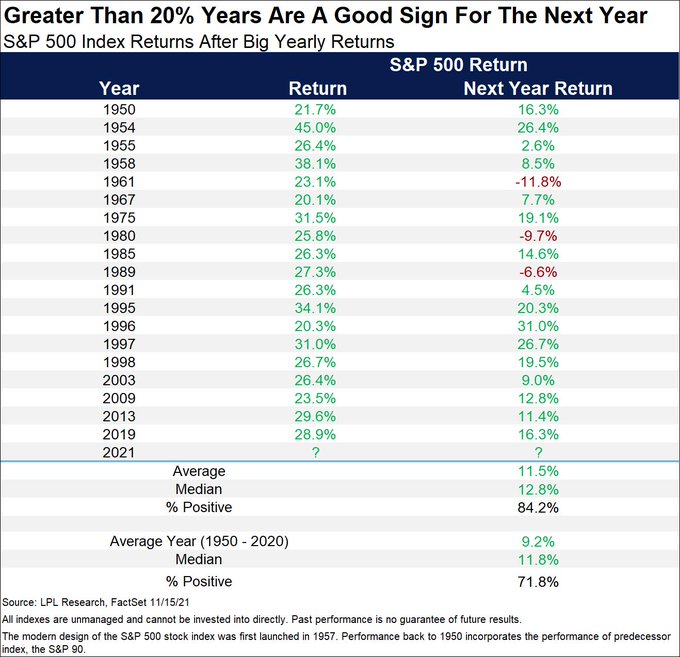Market perspective is essential in avoiding investing mistakes. With CNBC airing “Markets In Turmoil” every time the market dips, it’s no wonder investor sentiment is now the lowest we have seen financial crisis lows. Of course, as shown, extremely negative investor sentiment tends to be the hallmark of the bottom of corrections and bear markets. Nonetheless, now that we are connected constantly to financial media, we are inundated with headlines designed to get “clicks” more than delivering real news. As we discussed in “Investor Resolutions For 2022,” the biggest driver of investing failure over time is psychology. “The investor’s chief problem – and even his worst enemy – is likely to be himself.” – Benjamin Graham. The Anchoring Problem “Anchoring is a
Topics:
Lance Roberts considers the following as important: 9) Personal Investment, 9a.) Real Investment Advice, Featured, Investing, newsletter, Technically Speaking
This could be interesting, too:
Nachrichten Ticker - www.finanzen.ch writes Die Performance der Kryptowährungen in KW 9: Das hat sich bei Bitcoin, Ether & Co. getan
Nachrichten Ticker - www.finanzen.ch writes Wer verbirgt sich hinter der Ethereum-Technologie?
Martin Hartmann writes Eine Analyse nach den Lehren von Milton Friedman
Marc Chandler writes March 2025 Monthly
| Market perspective is essential in avoiding investing mistakes. With CNBC airing “Markets In Turmoil” every time the market dips, it’s no wonder investor sentiment is now the lowest we have seen financial crisis lows. | 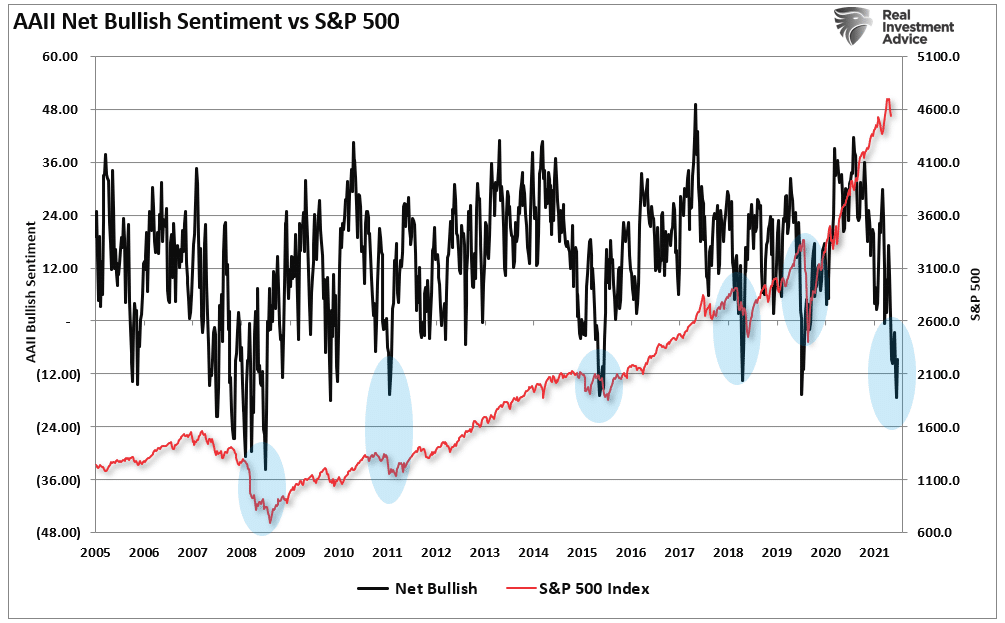 |
| Of course, as shown, extremely negative investor sentiment tends to be the hallmark of the bottom of corrections and bear markets.
Nonetheless, now that we are connected constantly to financial media, we are inundated with headlines designed to get “clicks” more than delivering real news. As we discussed in “Investor Resolutions For 2022,” the biggest driver of investing failure over time is psychology.
|
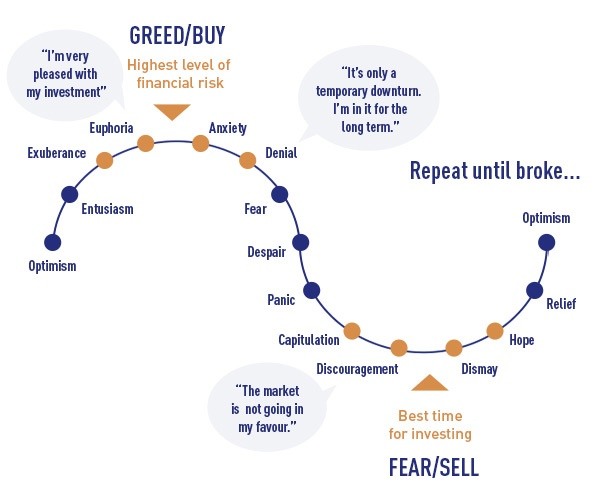 |
The Anchoring Problem
Investors are trained by the financial media to “anchor” to a fixed point in the market. We measure market performance from the 1st trading day of each year. Or from the peak of an advance. For example:
The problem is that most investors did not buy the 2020 bottom or sell the 2022 peak. These “anchor” points provide little perspective for the average investor regarding where they are relative to their financial goals. However, these “anchors,” tied to constant media updates, feed our emotional decision-making processes driven by “greed” or “fear.” Let’s take a look at an example: As of Friday’s close, the market is down 12% from its all-time high. |
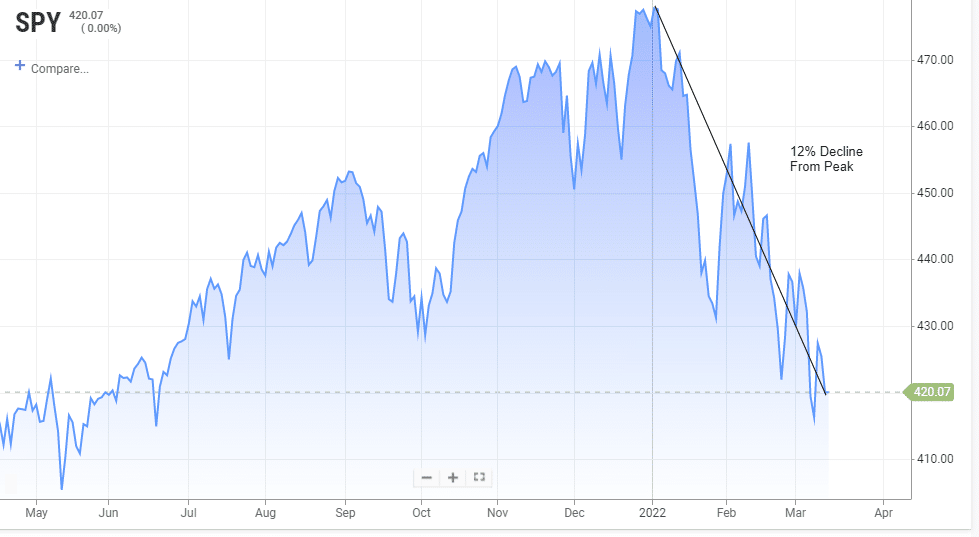 |
| As we warned about several times in 2021, when a 10% correction eventually came, it would “feel” worse than it was because of the long period of low volatility.
Yes, it feels terrible. However, we are now focusing on that “high-water mark.” But this is the goal of the Wall Street marketing machine. Getting you to focus on current gains or losses creates a “sense of urgency” for you to do something. Why?
Therefore, pushing you to take action may not necessarily be “profitable” for you, but it IS profitable for Wall Street. Changing Your Anchor PointTo reduce your “emotional action button,” step back and change your “anchor” point. If your portfolio is down 12% from the recent peak, ask yourself two questions:
If my goal is to average a 6% annualized return, where am I today relative to that goal? The issue of using the “high-water mark” as the “anchor” is that it resets psychologically to measure our performance from that level. |
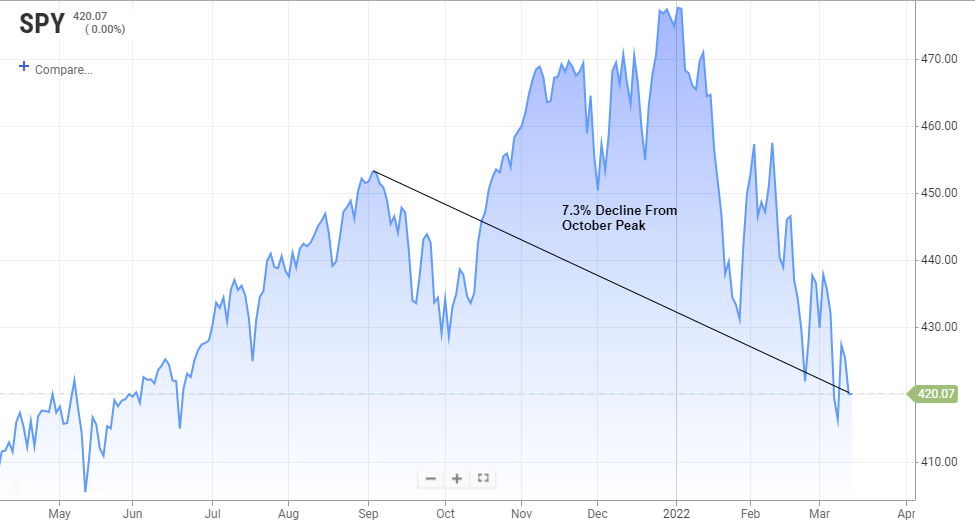 |
| We should measure performance from where we started. If that start was in early September 2021, the portfolio is down 7.3% and is indeed losing money relative to the financial goal.
For an investor that started a year ago, the market remains in a broad consolidation pattern. However, if an investor was smart enough to buy the March 2020 bottom, the portfolio is still up 88% from those lows after peaking at a 115% advance. That advance is still 14-years of appreciation needed to reach the financial goal. Yes, since January, an investor has given some gains back but remains well ahead of his financial objectives. The point here is that where you choose to “anchor” your analysis will have much to do with your emotional psychology in managing your money. Market perspective is important. |
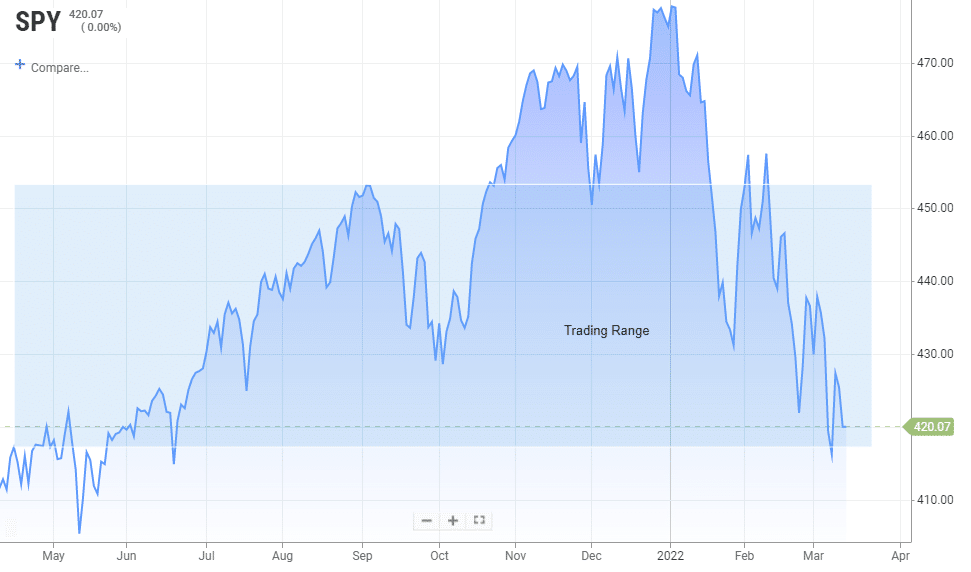 |
The Media Isn’t Helping YouDoes this mean you shouldn’t pay attention to your money or take action when things go wrong? Of course, not. With the media fueling our fears on a 24/7 basis, either from “Fear Of Missing Out” to “Fear Of Losing It All,” it is difficult not to let our emotions get the better of us. However, “anchoring” our market perspective to a previous high-water mark or portfolio dollar value exacerbates our already fragile emotional states. In the “heat of the moment,” it is easy to get caught up in the emotional pull of markets and portfolio valuation changes. Remaining unemotional with your money is the key to winning the long game. As Howard Marks once quipped:
We all make “bad choices,” we need some guidelines to maintain our market perspective. |
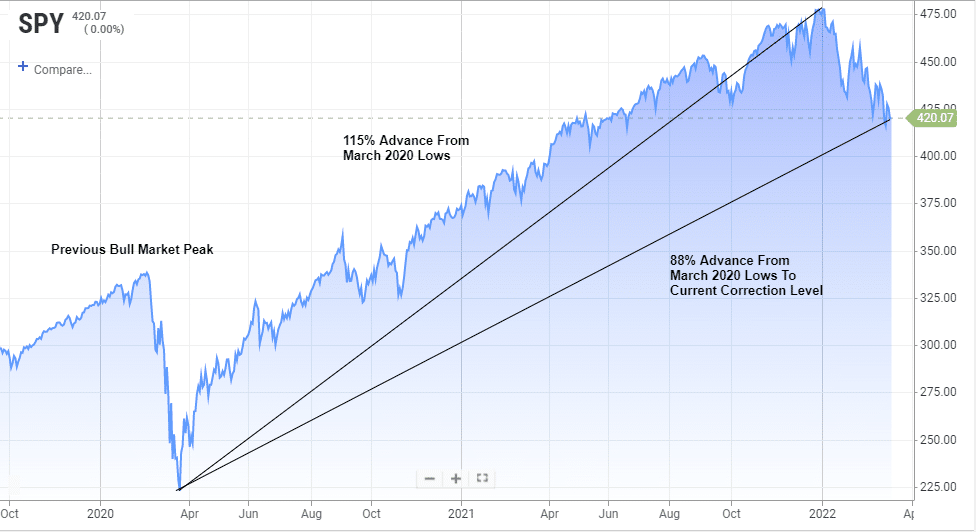 |
Make Better Bad Choices
My nutrition coach had a great saying about dieting; “make better bad choices.”
We are all going to make bad choices from time to time. The goal is to try and make bad choices that don’t have an outsized effect on our plan. When it comes to dieting, if you eat a burger, order it without cheese and mayonnaise.
When it comes to your portfolio, if you make speculative bets, do it in smaller sizes. Or, if you are leaning towards “panic selling” everything, start by selling some but not all of your holdings.
Importantly, focus on the rules and your investment discipline.
- Do more of what is working and less of what isn’t.
- Remember that the “Trend Is My Friend.”
- Be either bullish or bearish, but not “hoggish.” (Hogs get slaughtered)
- Remember it is “Okay” to pay taxes.
- Maximize profits by staging buys, working orders, and getting the best price.
- Look to buy damaged opportunities, not damaged investments.
- Diversify to control risk.
- Control risk by always having pre-determined sell levels and stop-losses.
- Do your homework.
- Not allow panic to influence buy/sell decisions.
- Remember that “cash” is for winners.
- Expect, but do not fear, corrections.
- Expect to be wrong, and will correct errors quickly.
- Check “hope” at the door.
- Be flexible.
- Have the patience to allow your discipline and strategy to work.
- Turn off the television, put down the newspaper, and focus on your analysis.
Importantly, keep your market perspective in check and make sure you aren’t anchoring to something that will lead to poor decisions over time.
More importantly, if you don’t have an investment strategy and discipline you are stringently following, that is an ideal place to begin.
The post Market Perspective Is Important To Avoid Mistakes appeared first on RIA.
Tags: Featured,Investing,newsletter,Technically Speaking





